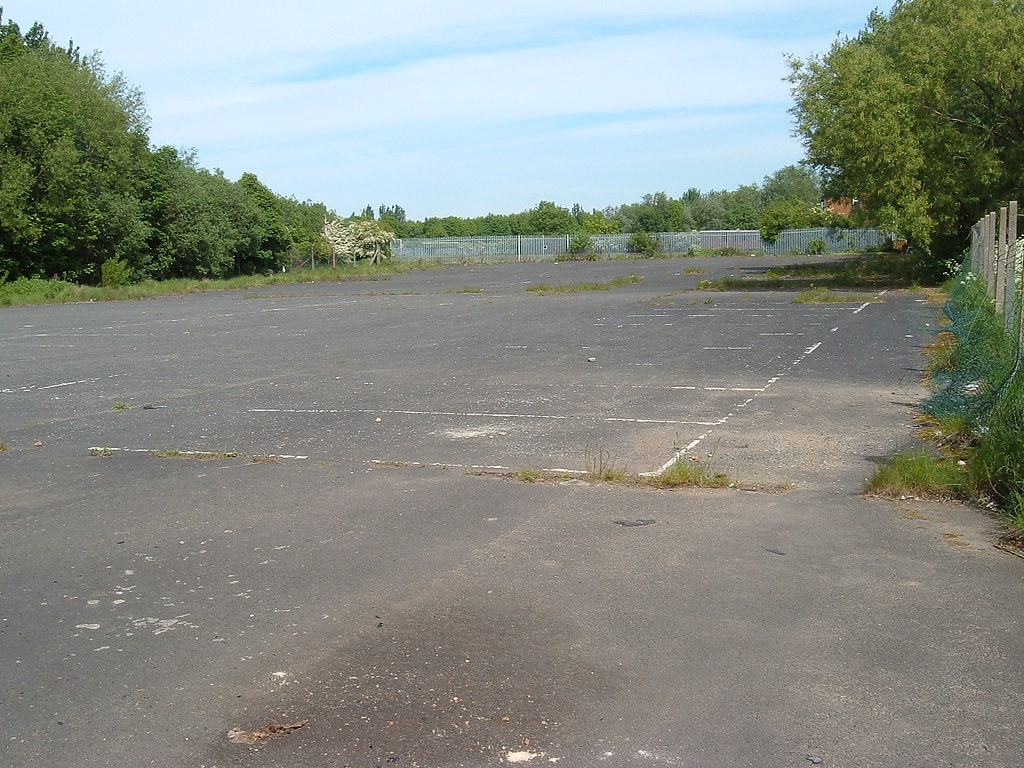Younger readers and those new to the area might not realise that there was once an airfield right in the heart of Teesside, much closer than the current Teesside Airport.
Thornaby Aerodrome opened in 1929 on the site of Vale Farm, which had in fact been used for flying activities as early as 1912.
It was known initially as RAF Thornaby, and was actually quite an early airfield, built before World War II started, and long before the swathes of bomber airfields which would later be built (including RAF Middleton St George, which is today’s Teesside Airport).
It was first occupied by 608 Squadron in 1930. This was an auxiliary flying unit, not tasked with mainline duties. The site would also become home to the No 9 Flying Training School from 1936-37.
Wartime Service
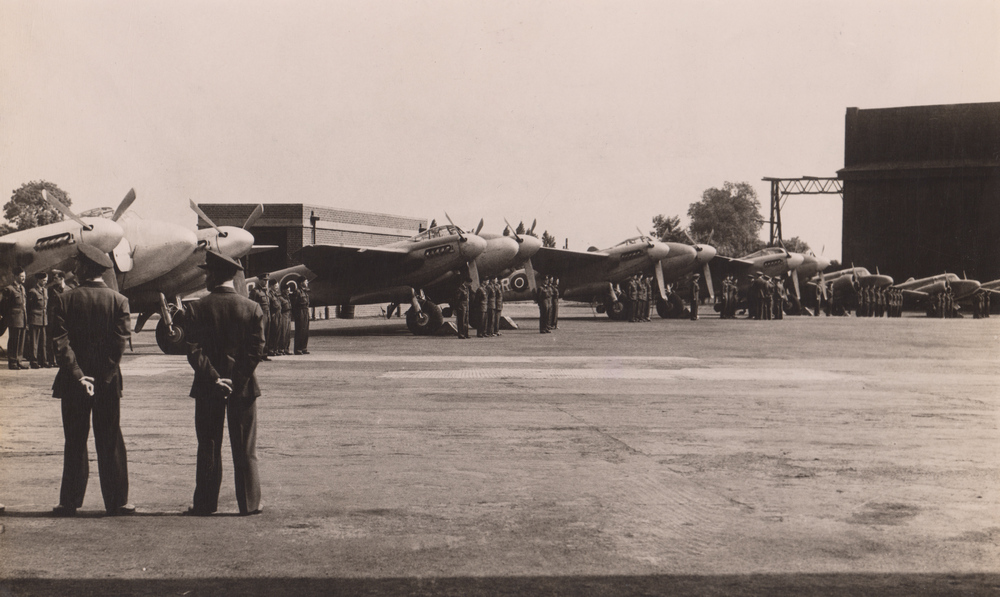
During World War II, Thornaby was called up for duties and became home to the No 18 Group Coastal Command squadron and 220 Squadron, which operated Avro Ansons and Lockheed Hudsons.
Coastal Command duties did not involve direct attack on enemy aircraft or on Germany itself, but instead on patrolling the North Sea and nearby coasts for enemy shipping.
Later in the war Thornaby was briefly home to a squadron of Spitfire aircraft.
Various other units passed through Thornaby, and many aircrews were trained there whilst on placement at the airfield.
Thornaby Aerodrome Site
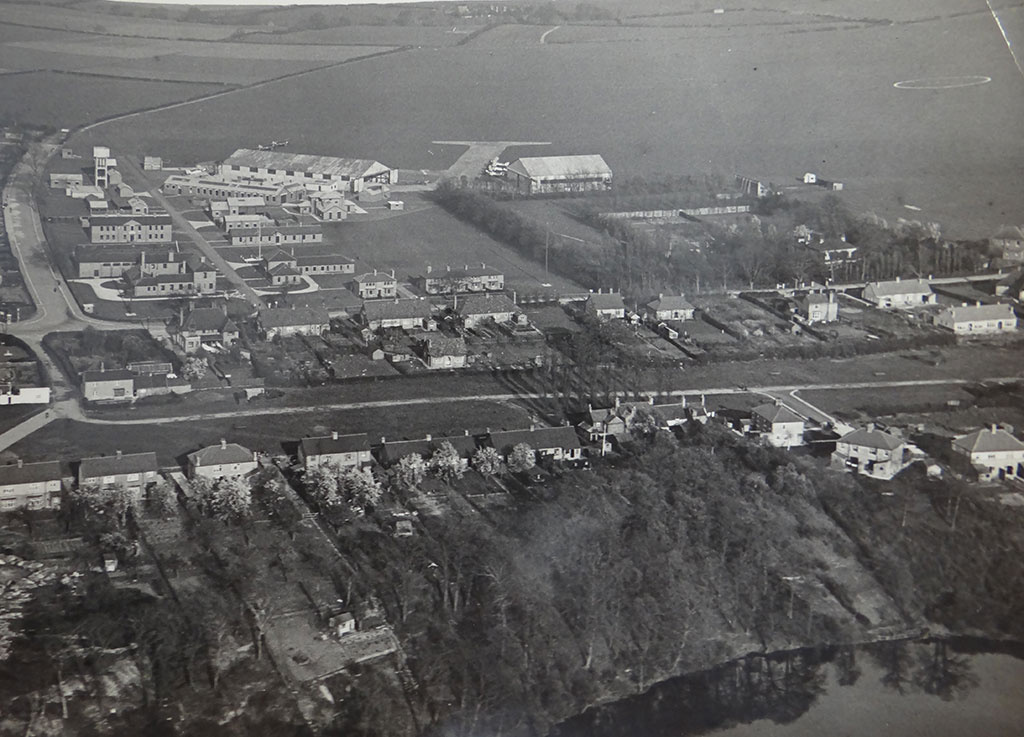
An early aerial view of Thornaby Aerodrome
The site of RAF Thornaby covered a large area of what is now Thornaby town centre.
Back then Thornaby was a smaller village, and the housing estates we see today (as well as the vast Ingleby Barwick estate) did not exist.
The airfield comprised the standard layout of three runways in a triangular pattern – built to offer best possible options in all wind conditions.
To the north of the runways were a collection of hangars of different sizes, messes, accommodation blocks and other support buildings essential to an operational airfield.
Post-War Thornaby Aerodrome
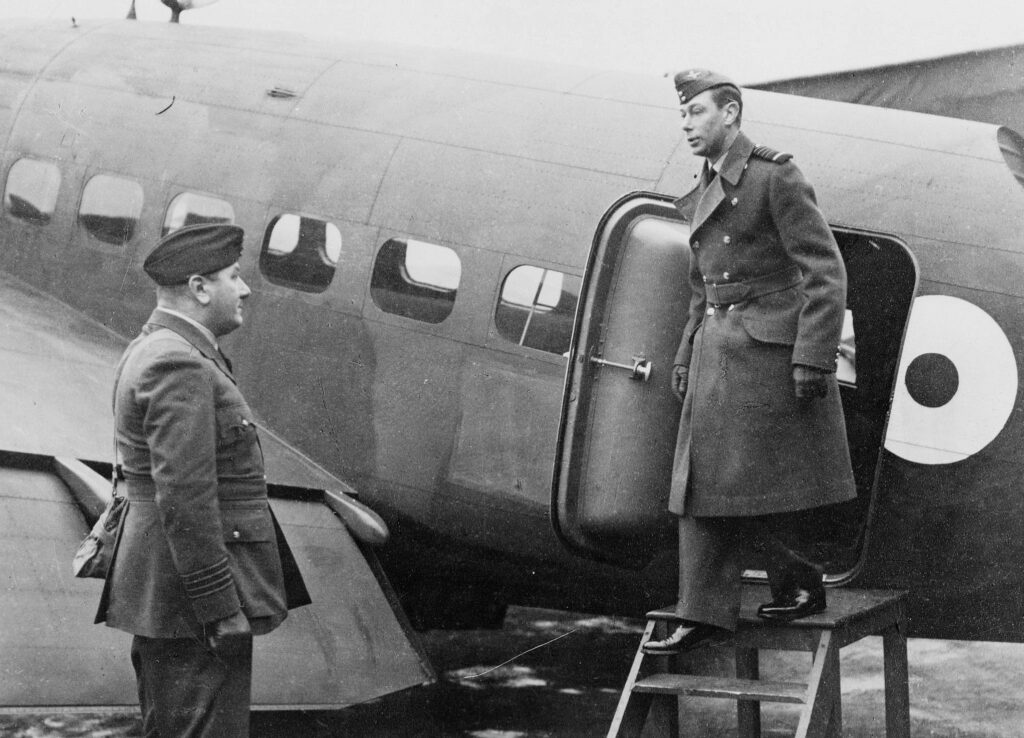
King George VI arriving at RAF Thornaby in an Avro Anson aircraft.
When the war ended Thornaby, like many other airfields across the country, was assigned a variety of reserve roles.
No 608 Squadron returned wih de Havilland Mosquitos and Airspeed Oxfords. In 1948 it received Spitfire F22s and North American Harvard trainers.
The following year the first jet aircraft were based at Thornaby in the form of de Havilland Vampires, with their twin-boom tails.
In the 1950s a Search and Rescue squadron moved in with Bristol Sycamore helicopters, and the noise level briefly rose in 1957 when Middleton St George’s Hawker Hunters moved in temporarily.
However, in October 1958 Thornaby was reduced to Care and Maintenance status, never to see another aircraft movement.
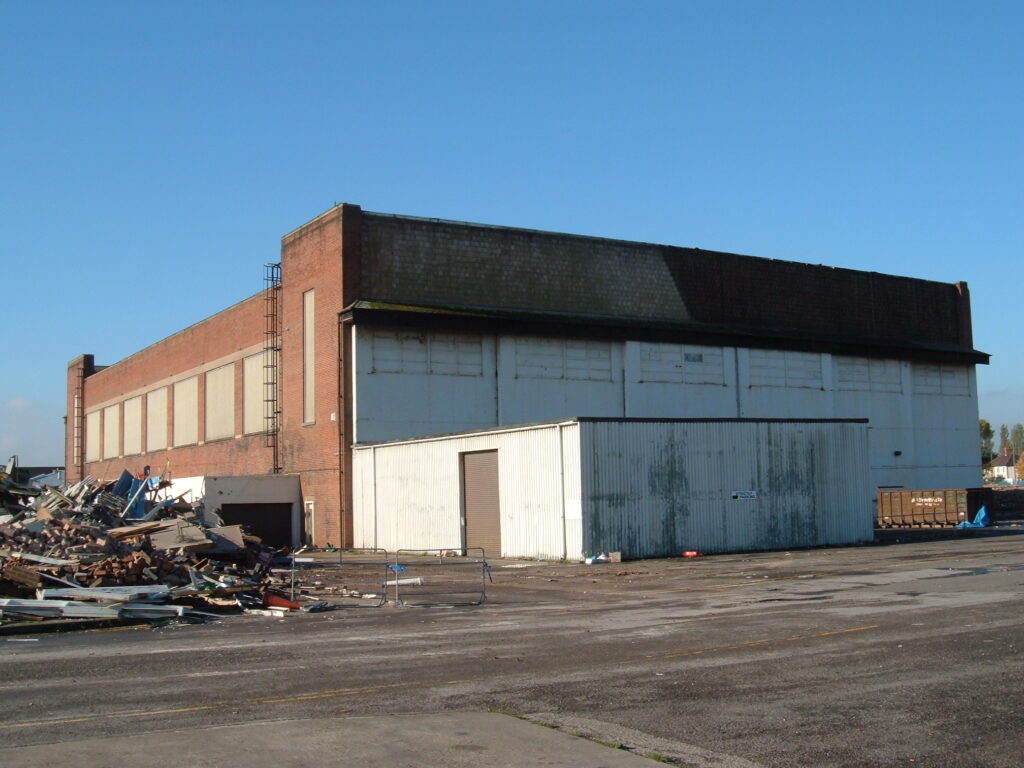
One of the main hangars at Thornaby survived until the early 2000s
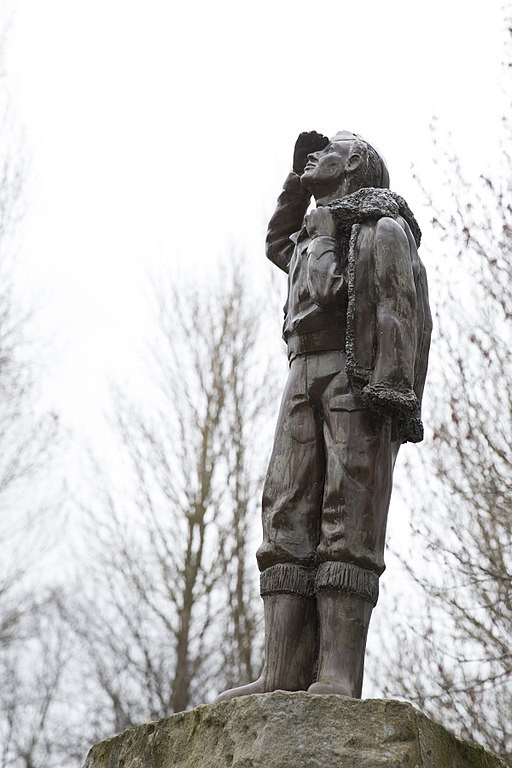
The joy of all things, CC BY-SA 4.0 <https://creativecommons.org/licenses/by-sa/4.0>, via Wikimedia Commons
Thornaby Aerodrome Today
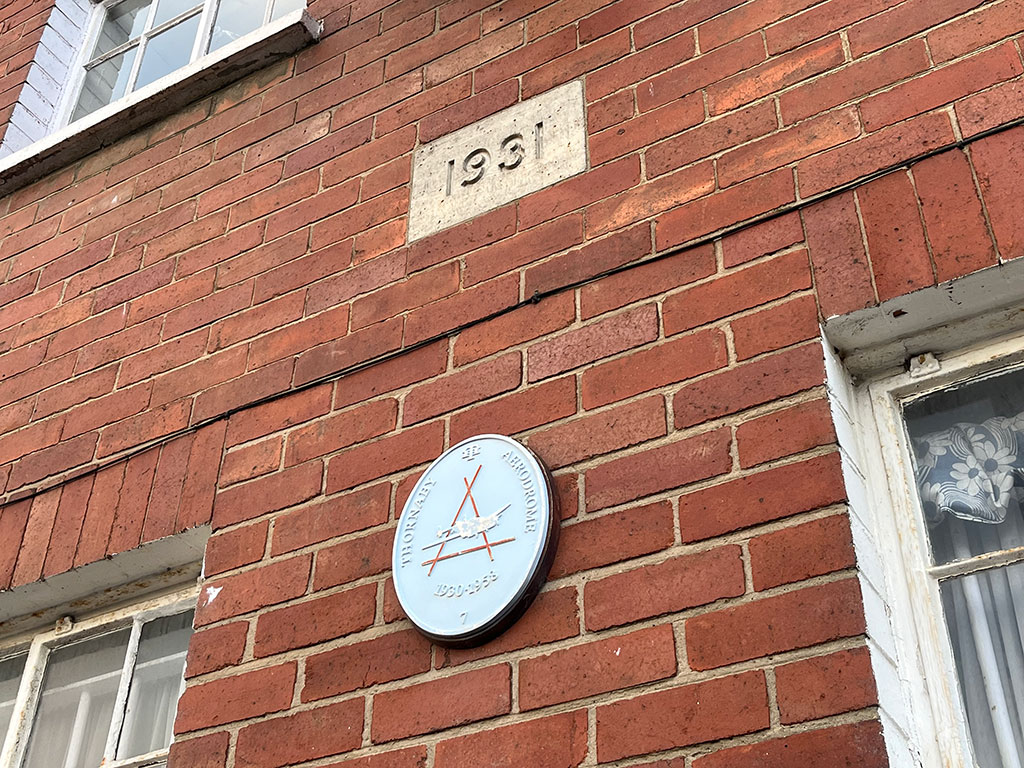
The date of the airfield’s construction, along with a memorial plaque, on the former Armoury building.
Driving around the area today, notice some of the street names and you’ll begin to realise the aviation link…
Bader Avenue, Trenchard Avenue, Havilland Road, Mitchell Avenue.
A strange curved street name Master Road seems to look out on an open space. This was once the edge of the main apron looking out onto the runways.
Then there’s the Spitfire replica.
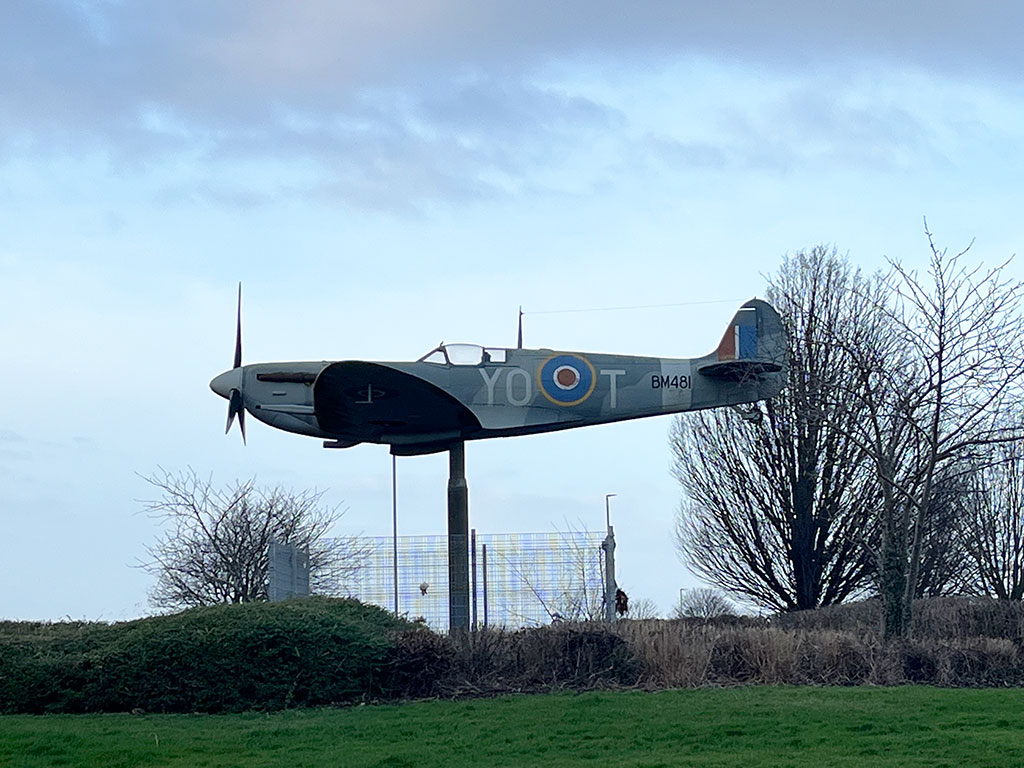
On a roundabout where Trenchard Avenue, Bader Avenue and the A1045 cross, this replica is mounted on a pole wearing the markings of the squadron once based here. It is roughly on the centrespot of the former airfield.
But what of the former buildings and runways – does anything still exist?
Driving west along Bader Avenue from the Spitfire roundabout, look on your left just before Middleton Avenue. You’ll see a curving stretch of tarmac skirting the edge of the playing field. This was formerly a taxiway linking the western runway thresholds.
In fact, Bader Avenue itself runs along a former runway.

The remains of a former taxiway at Thornaby Aerodrome
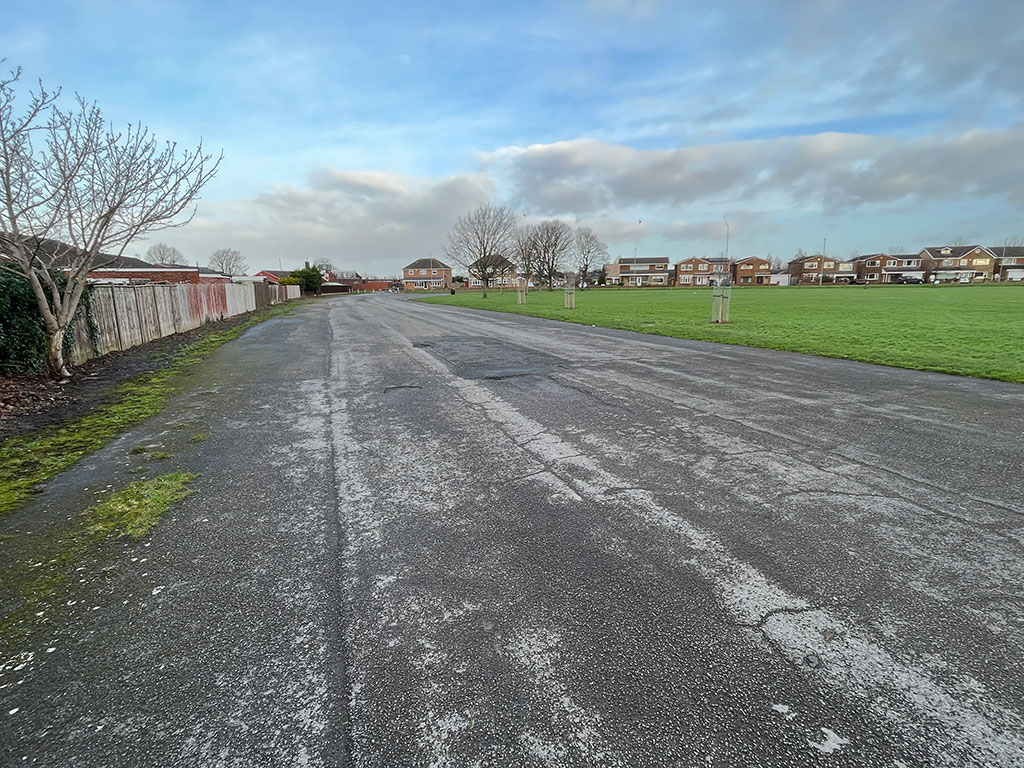
To the east, Tedder Avenue runs roughly along another taxiway route. Look out for Thornaby Sports & Leisure Club. Behind their building (sadly blocked off by a fence) is a small section of remaining runway, now used as a storage yard. It’s easier to see on satellite imagery.
Satellite images can also, just about (depending on the season) show some hints of the former taxiway and runway end to the north of the site, in the playing field of Thornaby Academy.
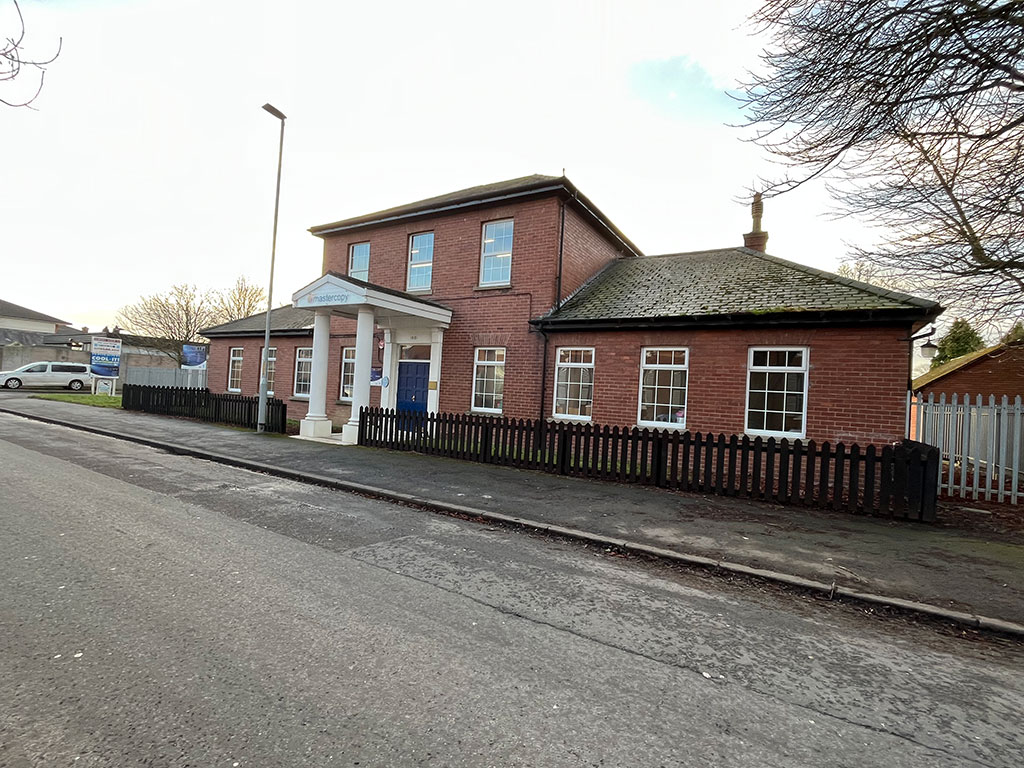
The former Station Headquarters for Thornaby Aerodrome.
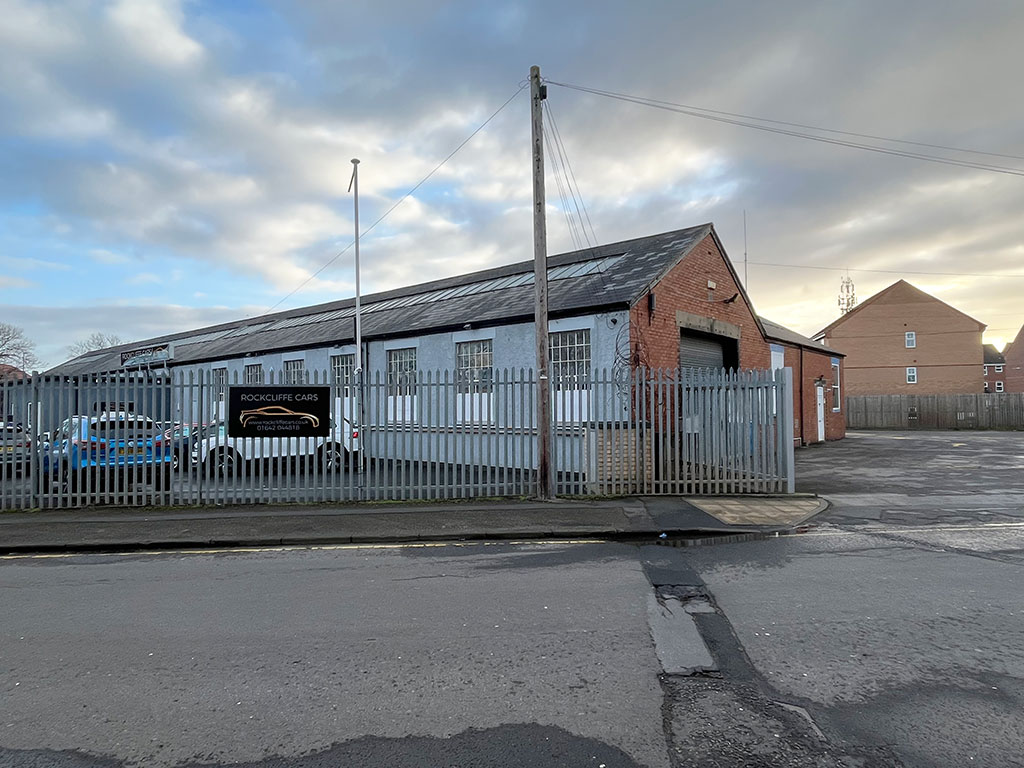
The old station workshops, now used as a garage.
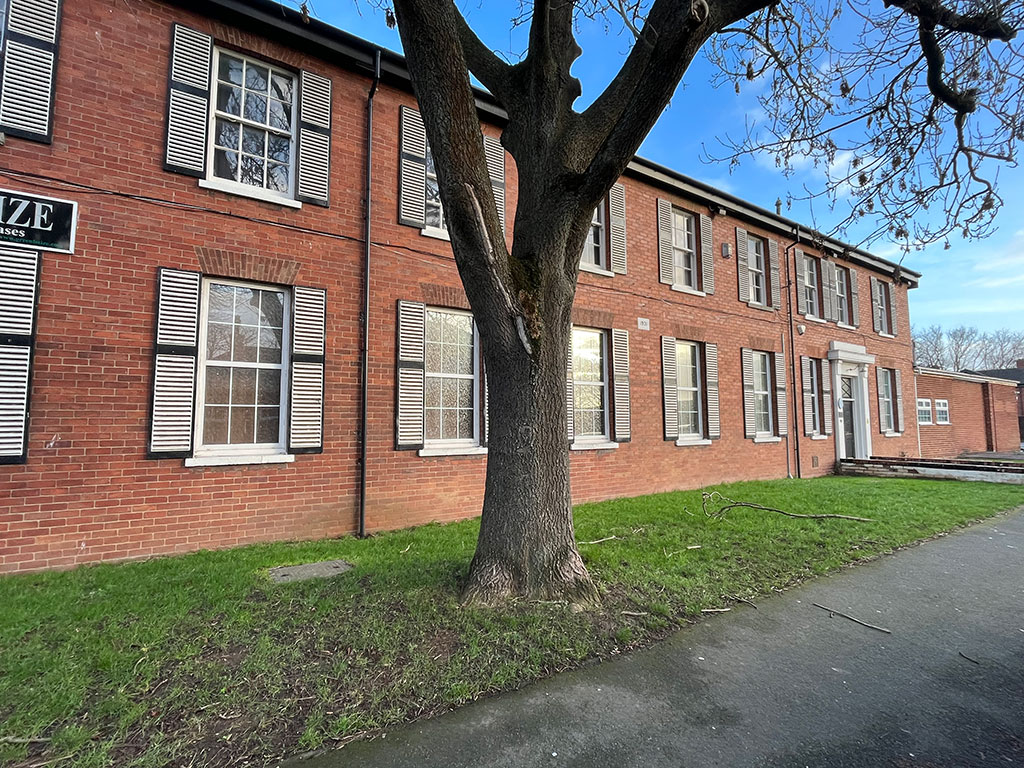
Thornaby Aerodrome NAAFI
As for buildings, there are still a number of surviving structures.
Martinet Road, off the A1045, was formerly the main entrance road to the technical site. It once led to hangars, officers quarters, engineering buildings, and the airfield itself.
Sadly the large hangars were demolished in the early 2000s, but some original buildings still survive in amongst the modern apartments, including the Station Headquarters, NAAFI, Armoury, Parachute Store, Commanding Officer’s House, Drill Hall, AMWD workshop, plus some of the married quarters housing.
There are still those who will remember aircraft flying at Thornaby, and the site long before it became the modern town centre and housing area. It’s important to keep the memories alive as part of our war heritage.
With thanks to Craig/Jims Pond for providing some images in this article.
Do you remember Thornaby Aerodrome? Leave a comment below.


